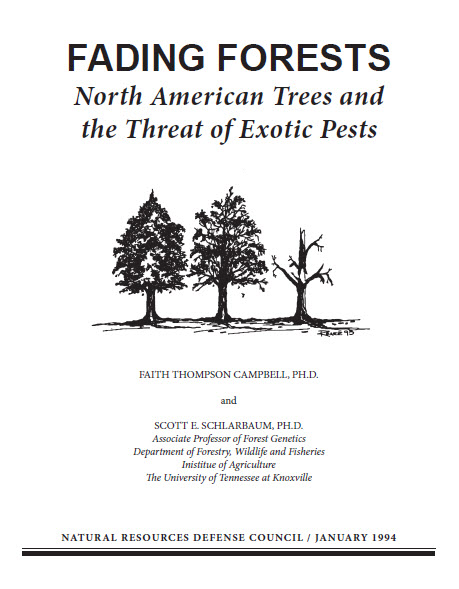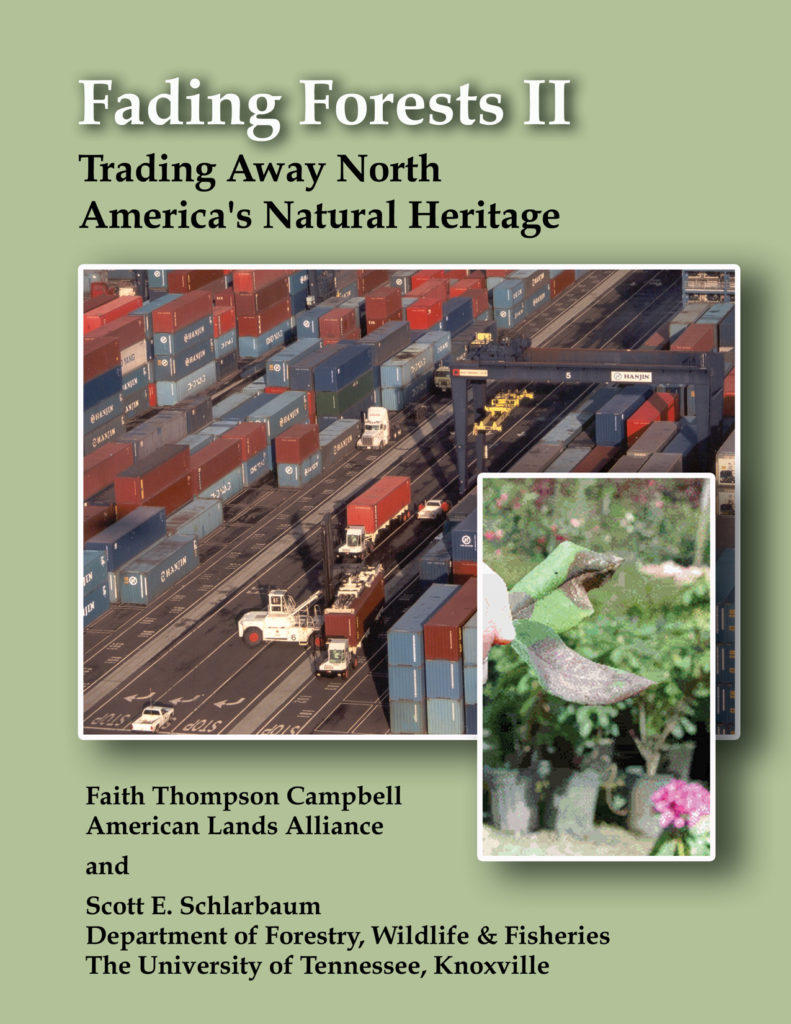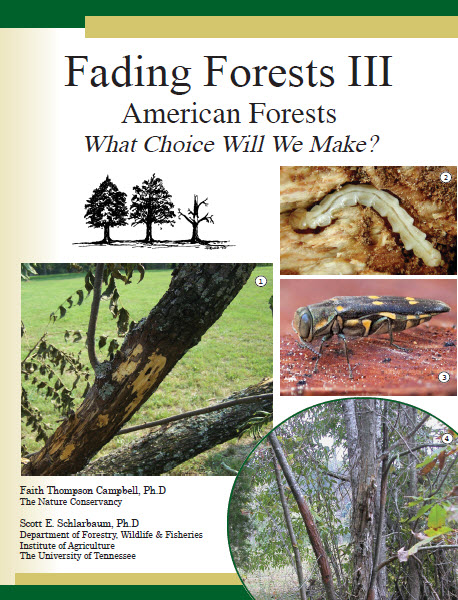Widespread mortality of a growing number of species caused by nonnative (i.e. exotic) forest pests is probably the most immediate serious challenge to maintaining the integrity of North American forest ecosystems. As international trade continues to expand, the transport of pathogens, insects and nematodes among countries is progressively frequent. Dr. Faith T. Campbell, Center for Invasive Species Prevention (cisp.us or nivemnic.us) and Professor Schlarbaum began working together on developing a series of policy analyses of the nonnative pest problem in 1991. This collaboration resulted in Fading Forests series, which spanned from 1994 to 2014. These documents are a unique blend of policy and biology, which outline the growing problem and suggest a real-world course of responses.
North American Trees and the Threat of Exotic Pests

1994, Natural Resources Defense Council: This publication describes the major exotic forest pests attacking North American forests, discusses the risk assessment process, and highlights flaws in trade policy that would reduce protection against importation of potential pests.
Trading Away North America’s Natural Heritage

2002, Healing Stones Foundation: This publication offers an in-depth policy analysis of the exotic forest pest problem and suggests options to help mitigate this growing problem.
American Forests: What Choice Will We Make?

2014, The Nature Conservancy and The University of Tennessee: This publication summarizes the changes in exotic forest pest problem areas that have occurred since 1994, emphasizing events since 2002. Additionally, it explores what additional measures are needed in the future to address this growing problem. Most importantly, Fading Forests III offers a stark look at the choices Americans have for the structure and function of their natural forest heritage.